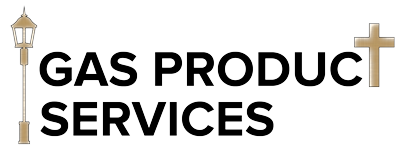How to Build a Gas Fire Pit
Creating a cozy outdoor space with a gas fire pit is a fantastic way to enhance your backyard ambiance.
In this guide, the gas grilling experts at Gas Product Services take you through a step-by-step process on gas fire pit installation. We’ll cover everything from choosing the right location to installing the necessary components.
Choose a Location
Before diving into the construction, it’s crucial to determine the ideal location for your fire pit. Consider safety regulations and ensure it’s placed at a safe distance from your house.
How Far Away from Your House Does a Gas Fire Pit Need to Be?
Typically, a fire pit should be at least 10-25 feet away from structures, including your house. Additionally, you must ensure 6-foot clearance around the entirety of the fire pit.
Check local building codes and safety guidelines for specific information concerning your location.
Prepare a Surface
Create a stable foundation for your fire pit to ensure safety and longevity. To prepare a surface for gas fire pit installation:
- Clear the area of debris and vegetation.
- Level the ground for stability.
- Use pavers or a non-combustible mat to protect the surface.
- Ensure proper drainage to prevent water accumulation.
- Follow local regulations and guidelines for safe outdoor gas grill installation.
Do You Need a Mat Under Your Gas Fire Pit?
While not mandatory, placing a non-combustible mat under your fire pit protects the surface beneath and adds an extra layer of safety.
Choose a Fuel Type
Selecting the right fuel type is a crucial decision. Ideal fuel types for a gas fire pit include propane and natural gas.
Propane offers flexibility with tank placement, while natural gas requires a dedicated gas line.
Does a Propane Gas Fire Pit Need a Gas Line?
No, a propane gas fire pit doesn’t need a dedicated gas line. Propane tanks can be discreetly placed, offering flexibility in the pit’s location.
Do I Need a Regulator For My Natural Gas Fire Pit?
Yes, a regulator is necessary for a natural gas fire pit to control the gas pressure and ensure safe and efficient operation.
Ensure Proper Ventilation
Proper ventilation is essential to prevent gas buildup and ensure the safety of your gas fire pit. For adequate ventilation, install two air vents on opposite sides of your pit.
Build the Enclosure
Create an enclosure that complements your outdoor space and meets safety standards.
Shop for Outdoor Gas Kitchen Components
Gather the necessary components for your gas fire pit, including:
- Burner: A component that produces flames in the fire pit. It can come in various shapes and sizes, providing the source of heat and visual appeal.
- Pan: A container that holds the burner and provides a base for fire media. It helps distribute the flames evenly and ensures a stable foundation for the fire pit.
- Connectors: The fittings and pipes that link the gas source to the burner. They play a crucial role in delivering the gas safely and efficiently to the fire pit.
- Air Mixer: A device that blends air with the gas before reaching the burner. This ensures proper combustion, enhancing flame stability and minimizing soot production.
- Media: The decorative elements in the fire pit, such as fire glass or lava rocks. It enhances the visual appeal and helps distribute heat evenly. It can be customized for aesthetic preferences.
- Wind Guards/Covers: Protective elements designed to shield the flame from wind, preventing disruptions to the fire. They also serve as safety features and can be decorative additions to the fire pit.
Choose an Ignition System
Select an ignition system that suits your preferences. Options include:
- Match-Lit: Manual lighting using a match or lighter.
- Electronic Ignition (Piezo): Push-button ignition with a spark to light the burner.
- Hot Surface Ignition: Uses a hot surface element to ignite the gas automatically.
- Electronic Ignition with Remote Control: Remote-controlled system for convenient and distant operation.
Install the Controls
Follow the manufacturer’s instructions to install the controls properly. This may include a control panel, gas valve, and ignition switch.
The control panel is a user interface that provides manual control over the fire pit’s operation, such as regulating the gas flow, flame height, and ignition. The gas valve is a component that controls the flow of gas to regulate the flame intensity and serves as a safety feature by enabling you to shut off the gas supply.
The ignition switch is a mechanism (often a button) that initiates the ignition process. It can be part of an electronic ignition system, triggering the spark or hot surface element to light the gas.
Build a Gas Fire Pit in Your Yard with Gas Product Services
By following these steps, you’ll be on your way to enjoying a beautiful and safely built fire pit in your yard. Always prioritize safety and adhere to local regulations during the construction process.
Choose Gas Product Services for expert gas fire pit installation. From product selection to professional installation, our expertise guarantees a safe, efficient, and customized addition to your yard.
To learn more about custom gas grill installation, contact our team today.


